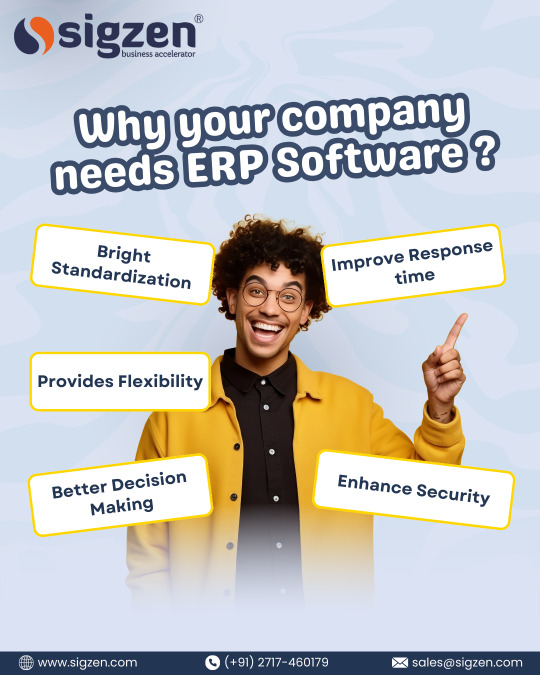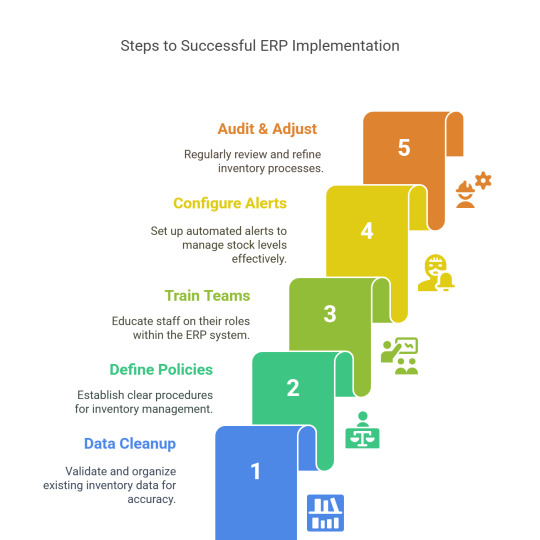#ERPNextIntegration
Explore tagged Tumblr posts
Text
Cement Incentive Schemes? Now Computed in Real Time.
Sigzen’s ERPNext software for the cement industry brings data-driven automation to sales scheme calculations.
✔️ Increase sales transparency ✔️ Automate target-based pricing ✔️ Eliminate manual errors
#erpnext#erpsoftware#erpnextimplementation#erpsolutions#inventorymanagement#erpnextintegration#erp#businessefficiency#erpnextcustomization
2 notes
·
View notes
Text

💼 Why does your company need ERP software? From streamlining processes to boosting security—ERP is the foundation of smarter business decisions.
Here’s what SigzenERP brings to your table: ✅ Bright standardization ✅ Faster response times ✅ Greater flexibility ✅ Better decision-making ✅ Enhanced data security
Ready to take your operations to the next level? 🌐 Learn more at www.sigzen.com
#erpnext#business growth#erp implementation#manufacturing solutions#business optimization#erp software solutions#inventory management#erp#erpnext services#erpnextintegration
3 notes
·
View notes
Text
Security Measures in ERPNext
As businesses increasingly rely on ERP systems to manage critical operations, ensuring robust security is essential to protect sensitive data and maintain operational integrity. ERPNext, an open-source ERP solution, integrates several security measures designed to safeguard business information and ensure system reliability.
This article delves into the key security features and practices within ERPNext that contribute to a secure ERP environment.
1. User Authentication and Access Control
Role-Based Access Control (RBAC): ERPNext implements a role-based access control system, allowing administrators to define user roles and permissions. This ensures that users only have access to the functions and data necessary for their specific roles.
Multi-Factor Authentication (MFA): ERPNext supports multi-factor authentication, adding an extra layer of security by requiring users to provide additional verification (such as a code sent to a mobile device) beyond just a password.
Key Benefit: RBAC and MFA help prevent unauthorized access and protect sensitive information by ensuring that only authorized users can access specific data and functionalities.
2. Data Encryption
Encryption at Rest: ERPNext uses encryption to protect data stored in its database. This ensures that even if an unauthorized party gains access to the physical storage, the data remains secure and unreadable without proper decryption keys.
Encryption in Transit: Data transmitted between users and the ERPNext server is encrypted using SSL/TLS protocols. This protects data from being intercepted or tampered with during transmission.
Key Benefit: Data encryption ensures the confidentiality and integrity of sensitive information, reducing the risk of data breaches and unauthorized access.
3. Secure Data Storage
Database Security: ERPNext employs robust security practices for database management, including regular security patches and updates. The system also supports database backups to safeguard against data loss.
File Storage Security: ERPNext secures files and attachments stored within the system by implementing access controls and encryption. This prevents unauthorized access to sensitive documents and files.
Key Benefit: Secure data storage practices protect against data loss and unauthorized access, ensuring that business-critical information remains safe and available.
4. Regular Security Updates and Patches
Patch Management: ERPNext provides regular updates and security patches to address vulnerabilities and enhance system security. These updates are essential for protecting against emerging threats and ensuring system integrity.
Key Benefit: Regular updates and patches keep the ERP system secure from known vulnerabilities, helping to prevent potential exploits and security breaches.
5. Audit Trails and Monitoring
Activity Logs: ERPNext maintains detailed audit trails of user activities, including login attempts, data modifications, and system changes. These logs provide visibility into user actions and help identify potential security incidents.
Monitoring Tools: The system includes monitoring tools to track and analyze security events and performance metrics. This helps administrators detect unusual activities and respond to potential security threats promptly.
Key Benefit: Audit trails and monitoring tools enhance transparency and accountability, making it easier to detect and investigate security incidents.
6. Data Backup and Recovery
Automated Backups: ERPNext supports automated backups of system data and configurations. Regular backups are crucial for ensuring that data can be restored in case of hardware failure, data corruption, or other disasters.
Disaster Recovery: The system includes disaster recovery options to ensure business continuity in the event of a major incident. This includes strategies for data restoration and system recovery.
Key Benefit: Data backup and recovery measures protect against data loss and ensure that the ERP system can be quickly restored after an incident.
7. Secure Configuration and Hardening
Configuration Best Practices: ERPNext follows best practices for secure system configuration, including setting up secure server environments, using strong passwords, and configuring firewalls.
System Hardening: The system can be hardened to reduce its attack surface by disabling unnecessary services, applying security patches, and implementing security controls.
Key Benefit: Secure configuration and hardening practices minimize vulnerabilities and strengthen the overall security posture of the ERP system.
8. Compliance with Security Standards
Industry Standards: ERPNext aligns with industry security standards and best practices, such as GDPR, HIPAA, and ISO/IEC 27001. Compliance with these standards helps ensure that the system meets rigorous security and privacy requirements.
Key Benefit: Adhering to security standards and regulations supports data protection and helps businesses meet legal and regulatory obligations.
9. User Training and Awareness
Training Programs: ERPNext encourages organizations to implement user training programs to educate employees about security best practices, such as recognizing phishing attempts and managing passwords securely.
Key Benefit: Training and awareness programs reduce the risk of human error and enhance overall system security by ensuring that users are informed about potential security threats and best practices.
Conclusion
ERPNext incorporates a comprehensive suite of security measures designed to protect sensitive data and maintain system integrity. From user authentication and data encryption to regular updates and secure configuration, these features collectively contribute to a robust security framework. By leveraging ERPNext’s security capabilities and following best practices, businesses can safeguard their information, ensure compliance, and maintain trust in their ERP system.
#erpnext#erpnextcustomization#erpnextimplementation#erpnextservices#erpnextsolutions#erpnextsupports#erpnextopensourceerp#leadingerpnextsolutions#erpnextpartner#erpnextdemo#erpnextintegration#erpnextdevelopment
0 notes
Text
💡 Want a 360° view of your real estate portfolio?
Sigzen’s ERP for real estate property management gives you total control—from sales to project approvals—all from a cloud-based dashboard.
2 notes
·
View notes
Text

Better Cement Inventory Starts with Better Data
Sigzen’s ERPNext-based inventory management module is the key to smart warehousing and optimized production in cement.
📌 Learn how ERP is driving inventory success: 🔗 https://medium.com/@sigzencement/inventory-management-in-the-cement-industry-unlocking-efficiency-with-stock-inventory-management-003da22193dc
#erpnext#erpsoftware#businessefficiency#inventorymanagement#erpnextimplementation#erpnextintegration#erp#erpsolutions
3 notes
·
View notes
Text
📈 ERP Software Is Shaping the Future of Enterprises in 2025! With evolving business needs and complex operations, ERPNext stands as the ultimate solution. Sigzen Technologies brings ERPNext to life with customized implementation, integration, and support.

2 notes
·
View notes
Text
🚚 Revolutionizing Cement Logistics with Truck Management ERP Cement manufacturers face logistics inefficiencies that cost time and money. Sigzen’s ERPNext Truck Management System brings structure and speed to your supply chain management process.
✅ Track shipments in real-time ✅ Automate dispatch and delivery ✅ Improve coordination across plants
#erpnext#inventorymanagement#erpnextimplementation#erpsoftware#erpsolutions#businessefficiency#erp#erpnextintegration
2 notes
·
View notes
Text
Discover how ERP for the manufacturing industry, powered by Sigzen’s ERPNext expertise, helps cement businesses automate their sales scheme processes. Cut down on errors, integrate finance, and speed up customer billing.
#erpnext#inventorymanagement#erpnextimplementation#businessefficiency#erpnextintegration#erpsolutions#erpsoftware
2 notes
·
View notes
Text
✨ Discover the Top Sales Force Automation (SFA) trends reshaping 2025! Learn how ERPNext + SFA tools boost productivity, enhance mobility, and drive smarter decisions.
🔗 https://medium.com/@SigzenSFA/top-sales-force-automation-sfa-trends-you-cant-ignore-in-2025-c5acc5269
2 notes
·
View notes
Text
Why Every Real Estate Company Needs ERP Today Spreadsheets can’t scale—but ERP can.
Sigzen’s tailored ERP software helps real estate firms manage client relationships, compliance, and cash flow with precision.
#erpnext#erpsoftware#erpnextimplementation#erpnextcustomization#erpsolutions#erpnextintegration#inventorymanagement
1 note
·
View note
Text
Cement Manufacturing + ERP = Smarter Growth
Production delays? Material shortages? Budget overruns?
Sigzen’s ERPNext for Manufacturing provides an integrated MRP solution that fixes them all.
💡 Learn how we power cement factories with data.
🔗 Read the full blog: https://medium.com/@sigzencement/manufacturing-resource-planning-with-erpnext-revolutionizing-cement-industry-operations-dade0e4a283d
ERPForCementIndustry #ERPNextConsultant #ManufacturingERPNext #SigzenSolutions
#erpnext#erpsoftware#businessefficiency#erpsolutions#erpnextintegration#erpnextcustomization#erpnextimplementation
1 note
·
View note
Text
Real Estate Developers: Accelerate Sales and Simplify Projects
Sigzen's ERPNext solution is tailored for the real estate industry—integrating sales, CRM, project tracking, and accounting into one cloud-based platform.
💡 Built for builders, powered by precision.
📖 Read now: https://medium.com/@SigzenEstate/erp-for-real-estate-developers-the-ultimate-software-solution-to-accelerate-sales-scale-projects-9febb48fe4bf
ERPNext #ERPForRealEstateDevelopers #DigitalRealEstate #SigzenTechnologies
#erpnextimplementation#erpsoftware#businessefficiency#inventorymanagement#erpsolutions#erpnextintegration#erp#erpnext
0 notes
Text
With ERP Accounting Software by Sigzen, cement manufacturers can simplify invoicing, gain real-time financial insights, and ensure full compliance.
✅ Smart Invoicing Software ✅ Seamless Accounting Integration ✅ Tailored for the Cement Industry
#ERPAccountingSoftware#InvoicingSoftware#ERPforCementIndustry#ERPNext#erpsoftware#erpnextimplementation#erpnextcustomization#erpnextintegration#erp#businessefficiency
1 note
·
View note
Text
How ERP Solutions Are Redefining Manufacturing in 2025
The future of manufacturing lies in automation, data visibility, and intelligent decision-making. With ERPNext for manufacturing, Sigzen Technologies empowers businesses to:
#erpnext#inventorymanagement#erpnextimplementation#erpsoftware#erpnextintegration#erpnextcustomization#salesautomation#businessefficiency
1 note
·
View note
Text
#ERPNext#WholesaleERP#ERPforWholesale#ERPNextWholesale#ERPSolutions#ERPSoftware#InventoryManagement#OrderManagement#SupplyChainERP#CloudERP#BusinessERP#ERPImplementation#ERPFeatures#ERPModules#ERPCustomization#ERPNextIntegration#ERPNextPricing#ERPNextSupport#ERPNextTraining#WholesaleDistributionERP#ERPNextBenefits#ERPNextDemo#ERPNextSetup#ERPNextCloud#WholesaleSoftware#ERPNextReview#ERPNextSolutions#ERPNextGuide#ERPNextTutorial#ERPNextUpdates
1 note
·
View note
Text
#ERPNextForRetail#ERPNextForWholesale#RetailERPSolutions#WholesaleERPSoftware#ERPForRetailBusinesses#ERPForWholesaleDistribution#ERPNextImplementation#ERPNextFeaturesForRetail#ERPNextFeaturesForWholesale#RetailInventoryManagementERP#WholesaleInventoryManagementERP#BestERPForRetail#BestERPForWholesale#ERPNextCustomization#ERPNextIntegration#RetailERPSystemBenefits#WholesaleERPSystemBenefits#CloudERPForRetail#CloudERPForWholesale#ERPNextSupport
1 note
·
View note